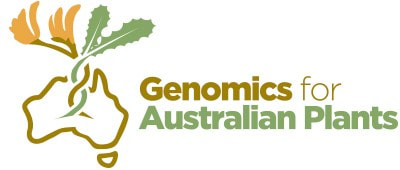Our research interests concentrate on questions of floral evolution and macroevolution of angiosperms (flowering plants).
Some of our projects address these questions at large in angiosperms as a whole, while others focus on specific clades such as Magnoliidae and Proteaceae (see below). We use a broad range of approaches including comparative methods, phylogenetic reconstruction, molecular dating, diversification rates, next-generation sequencing, Evo-Devo, floral and pollen morphology, paleobotany, and systematics.
Some of our projects address these questions at large in angiosperms as a whole, while others focus on specific clades such as Magnoliidae and Proteaceae (see below). We use a broad range of approaches including comparative methods, phylogenetic reconstruction, molecular dating, diversification rates, next-generation sequencing, Evo-Devo, floral and pollen morphology, paleobotany, and systematics.
|
eFLOWER project
eFLOWER is a collaborative scientific project aimed at answering key questions on the evolution of flowers. For instance, what were flowers like in deep nodes of the angiosperm tree? Which floral innovations are linked with major increases in diversification rates? Where do fossil flowers fit on the phylogeny of extant angiosperms? To answer these questions, we are building a database of floral traits for a large sample of angiosperm species (PROTEUS). A key focus of current work is the integration of the fossil record in this database and our macroevolutionary analyses (Paleo-eFLOWER). Learn more about the project and database on the eFLOWER website. |
|
Australian Angiosperm Tree of Life (AAToL)
The Australian Angiosperm Tree of Life (AAToL) is a national project aimed at reconstructing a complete, genus-level phylogenomic tree for the Australian flora, based on a target capture high-throuput sequencing approach. The AAToL is one of the flagship projects of the Genomics for Australian Plants (GAP) Framework Data Initiative, funded by Bioplatforms Australia. It involves the collaboration among six teams from all major Australian herbaria and with the global Plant and Fungal Trees of Life (PAFTOL) project led by the Royal Botanic Gardens, Kew. I am currently a member of the Phylogenomics Working Group that oversees the AAToL and the leader of the NSW-NE team for this project, including members of the National Herbarium of New South Wales (NSW) and the the Botany & N.C.W. Beadle Herbarium, University of New England (NE). |
|
AusTraits: a national database on the traits of Australia’s complete flora
AusTraits is a large collaborative project on traits of the Australian flora (AusTraits), currently funded through the Australian Data Partnerships program of Australian Research Data Commons (ARDC). A key goal is to develop new standards for plant trait vocabulary (incl. the universal Minimum Trait Set for flowering plants developed with Russell Barrett) and deliver open, standardised, curated plant trait data online for use in ecology, evolution, systematics, and conservation. The project involves a total of 26 partners from 19 organisations. I am a member of the lead team of AusTraits, together with Daniel Falster (coordinator, UNSW), Rachael Gallagher (co-lead, Western Sydney University), and Elizabeth Wenk (project manager, UNSW). |
|
Floral evolution in Proteaceae
Various projects focus on the large Southern Hemisphere flowering plant family Proteaceae (1700 species). Key goals are to reconstruct floral evolution in this family, including the repeated origin of floral bilateral symmetry (zygomorphy), and to identify factors influencing speciation and extinction. I am currently a Principal Investigator on a Discovery research grant from the Australian Research Council (ARC), coordinated by Marcel Cardillo. This project (Evolutionary history and conservation of an iconic Australian plant group) aims at using high-throughput genomic sequencing to reconstruct the first complete, species-level phylogeny of Grevilleoideae (1000 species) and us it to drive effective conservation plans. |
|
Floral evolution in Magnoliidae
Several projects are focusing on the large flowering plant clade Magnoliidae (10,000 species in 20 families and 4 orders: Canellales, Piperales, Laurales, and Magnoliales). A key focus is understanding the evolution of the remarkably diverse (and bizarre) flowers in this group. Through various international collaborations, we are also using genomic tools to improve phylogenetic reconstruction in several families, including Annonaceae. |





